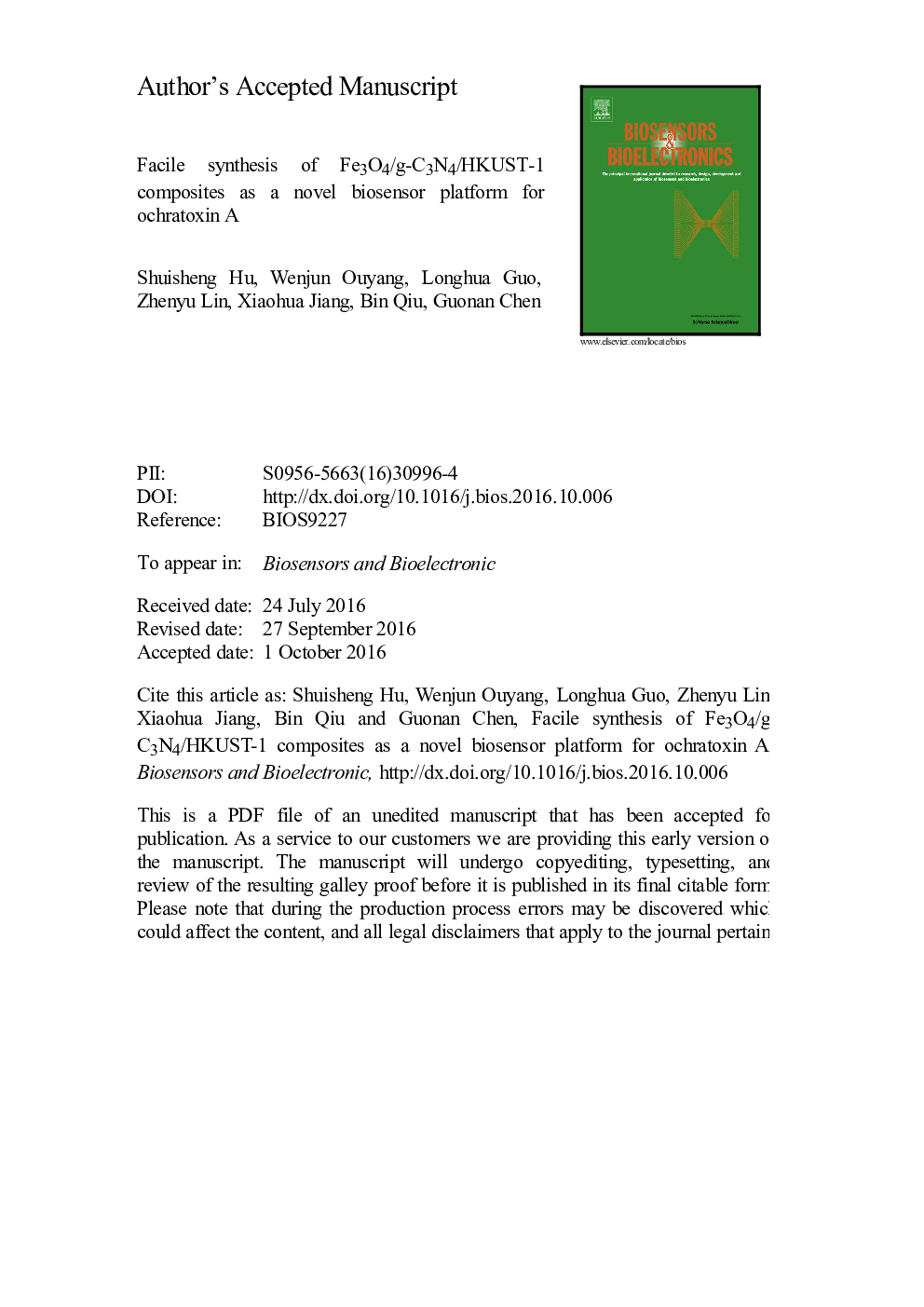| Article ID | Journal | Published Year | Pages | File Type |
|---|---|---|---|---|
| 5031659 | Biosensors and Bioelectronics | 2017 | 25 Pages |
Abstract
A fluorescent biosensor for ochratoxin A was fabricated on the basis of a new nanocomposite (Fe3O4/g-C3N4/HKUST-1 composites). Fe3O4/g-C3N4/HKUST-1 was synthesized in this work for the first time, which combined HKUST-1 with g-C3N4 to improve its chemical stability. Fe3O4/g-C3N4/HKUST-1 composites have strong adsorption capacity for dye-labeled aptamer and are able to completely quench the fluorescence of the dye through the photoinduced electron transfer (PET) mechanism. In the presence of ochratoxin A (OTA), it can bind with the aptamer with high affinity, causing the releasing of the dye-labeled aptamer from the Fe3O4/g-C3N4/HKUST-1 and therefore results in the recovery of fluorescence. The fluorescence intensity of the biosensor has a linear relationship with the OTA concentration in the range of 5.0-160.0Â ng/mL. The LOD of sensor is 2.57Â ng/mL (S/N=3). This fluorescence sensor based on the Fe3O4/g-C3N4/HKUST-1 composites has been applied to detect OTA in corn with satisfying results.
Related Topics
Physical Sciences and Engineering
Chemistry
Analytical Chemistry
Authors
Shuisheng Hu, Wenjun Ouyang, Longhua Guo, Zhenyu Lin, Xiaohua Jiang, Bin Qiu, Guonan Chen,
